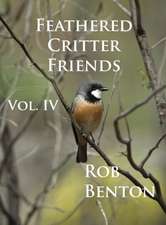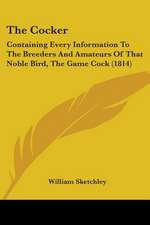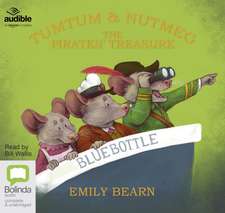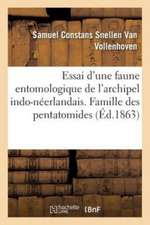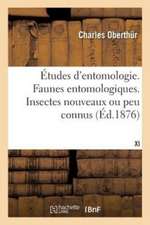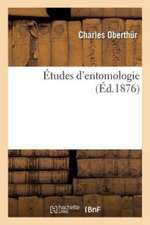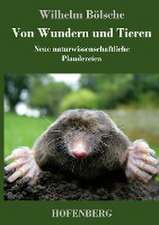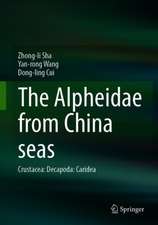Rumen Microbial Ecosystem
Editat de P.N. Hobson, C. S. Stewarten Limba Engleză Hardback – 31 dec 1988
| Toate formatele și edițiile | Preț | Express |
|---|---|---|
| Paperback (1) | 1836.94 lei 6-8 săpt. | |
| SPRINGER NETHERLANDS – 26 sep 2011 | 1836.94 lei 6-8 săpt. | |
| Hardback (2) | 1833.48 lei 6-8 săpt. | |
| SPRINGER NETHERLANDS – 31 dec 1988 | 1833.48 lei 6-8 săpt. | |
| SPRINGER NETHERLANDS – 31 mai 1997 | 1843.60 lei 6-8 săpt. |
Preț: 1833.48 lei
Preț vechi: 2235.94 lei
-18% Nou
Puncte Express: 2750
Preț estimativ în valută:
350.84€ • 367.05$ • 291.44£
350.84€ • 367.05$ • 291.44£
Carte tipărită la comandă
Livrare economică 02-16 aprilie
Preluare comenzi: 021 569.72.76
Specificații
ISBN-13: 9781851661886
ISBN-10: 1851661883
Pagini: 540
Ilustrații: XII, 527 p.
Dimensiuni: 178 x 254 x 34 mm
Greutate: 0.93 kg
Ediția:1989
Editura: SPRINGER NETHERLANDS
Colecția Springer
Locul publicării:Dordrecht, Netherlands
ISBN-10: 1851661883
Pagini: 540
Ilustrații: XII, 527 p.
Dimensiuni: 178 x 254 x 34 mm
Greutate: 0.93 kg
Ediția:1989
Editura: SPRINGER NETHERLANDS
Colecția Springer
Locul publicării:Dordrecht, Netherlands
Public țintă
ResearchCuprins
1 Introduction.- 1.1 Humans and herbivores.- 1.2 The ruminants.- 1.3 The rumen and its development.- 1.4 The functioning rumen.- 1.5 The future.- References.- 2 The rumen bacteria.- 2.1 Substrate specificities of rumen bacteria.- 2.2 Major groups of rumen bacteria.- 2.3 Methods for the isolation, enumeration and cultivation of rumen bacteria.- References.- 3 The rumen protozoa.- 3.1 The entodiniomorphid protozoa.- 3.2 The holotrich protozoa.- 3.3 Interaction of rumen ciliates with other microbial groups in the rumen.- 3.4 The importance of protozoa to the ruminant.- References.- 4 The rumen anaerobic fungi.- 4.1 Taxonomy.- 4.2 Genera and species.- 4.3 Fine structure.- 4.4 Life cycles in vivo.- 4.5 Estimation of population density and biomass.- 4.6 Isolation and culture.- 4.7 Chemical composition.- 4.8 Intermediary metabolism.- 4.9 Fermentation of carbohydrates.- 4.10 Enzymology of lignocellulose catabolism by rumen anaerobic fungi.- 4.11 Nucleic acids of anaerobic fungi.- 4.12 Cloning genes of rumen fungi.- 4.13 Regulation of lignocellulolytic enzyme production in rumen fungi.- 4.14 Attack on plant tissues.- 4.15 Fungal interactions with rumen bacteria.- 4.16 Fungal interactions with rumen protozoa.- 4.17 Transfer between animals.- 4.18 Antibiotic sensitivities.- 4.19 Effects of diet on rumen fungal populations.- 4.20 Conclusions.- Acknowledgement.- References.- 5 Development of, and natural fluctuations in, rumen microbial populations.- 5.1 Rumen ciliate protozoa.- 5.2 Rumen flagellate protozoa.- 5.3 Anaerobic fungi.- 5.4 Rumen bacteria.- 5.5 Interrelationships between rumen microbial populations.- References.- 6 Energy-yielding and energy-consuming reactions.- 6.1 Strategies for rumen microorganisms.- 6.2 Energy-yielding reactions.- 6.3 Energy-consuming reactions.- 6.4 VFAs and low pH.- 6.5 Ionophores.- 6.6 Metabolic regulation.- 6.7 Starvation.- 6.8 Conclusions.- References.- 7 Metabolism of nitrogen-containing compounds.- 7.1 Flow of nitrogenous compounds through the rumen.- 7.2 Breakdown of dietary nitrogenous compounds.- 7.3 Anabolic nitrogen metabolism.- 7.4 Conclusion.- References.- 8 Polysaccharide degradation by rumen microorganisms.- 8.1 Structure and digestion of plant storage polysaccharides.- 8.2 Structure of plant cell walls.- 8.3 Digestion of plant cell walls by rumen microorganisms.- 8.4 Limitations to polysaccharide degradation.- Acknowledgements.- References.- 9 Lipid metabolism in the rumen.- 9.1 Role of microorganisms in ruminant lipid metabolism.- 9.2 Composition of dietary lipids.- 9.3 Hydrolysis of dietary lipids.- 9.4 Biohydrogenation in the rumen.- 9.5 Other lipid transformations.- 9.6 Effect of lipids on rumen fermentation.- 9.7 Composition of microbial lipids.- 9.8 Biosynthesis of microbial lipids.- 9.9 Conclusions.- References.- 10 Genetics of rumen bacteria.- 10.1 Molecular ecology.- 10.2 Mutagenesis in rumen bacteria.- 10.3 Gene and protein structure and expression in rumen bacteria.- 10.4 Gene transfer in rumen bacteria.- 10.5 Conclusions.- References.- 11 Microbe-microbe interactions.- 11.1 Nutritional interactions.- 11.2 Interactions and nitrogen compounds.- 11.3 Carbohydrate fermentation.- 11.4 Amensalistic interactions.- 11.5 Interactions and diversity.- References.- 12 Compartmentation in the rumen.- 12.1 Compartmental models.- 12.2 The rumen simulation technique (Rusitec): a model multicompartment system.- 12.3 The rumen as a multicompartment system.- 12.4 Some consequences of compartmentation in the rumen.- 12.5 Concluding remarks.- References.- 13 Manipulation of ruminal fermentation.- 13.1 Therumen fermentation.- 13.2 The aim in manipulating ruminal fermentation.- 13.3 Modification of the ruminal fermentation pattern.- 13.4 Approaches to modification of ruminal fermentation.- 13.5 Modifiers of ruminal microbial activity.- 13.6 Conclusions.- References.- 14 Digestive disorders and nutritional toxicity.- 14.1 Rumen dysfunctions associated with microbial activities.- 14.2 Neurological dysfunctions associated with microbial activities in the rumen.- 14.3 Microbial transformation.- 14.4 Strategies for addressing toxicity problems in ruminants.- References.- 15 Biological models of the rumen function.- 15.1 Defined bacterial populations without protozoa.- 15.2 The young ruminant.- 15.3 The ‘adult’ ruminant.- References.- 16 Rumen mathematical modelling.- 16.1 Rumen models.- 16.2 History of fermenter and rumen modelling.- 16.3 Modelling the main digestive events.- 16.4 Aggregation of several digestive events.- 16.5 Whole-rumen models.- 16.6 Conclusions.- References.




